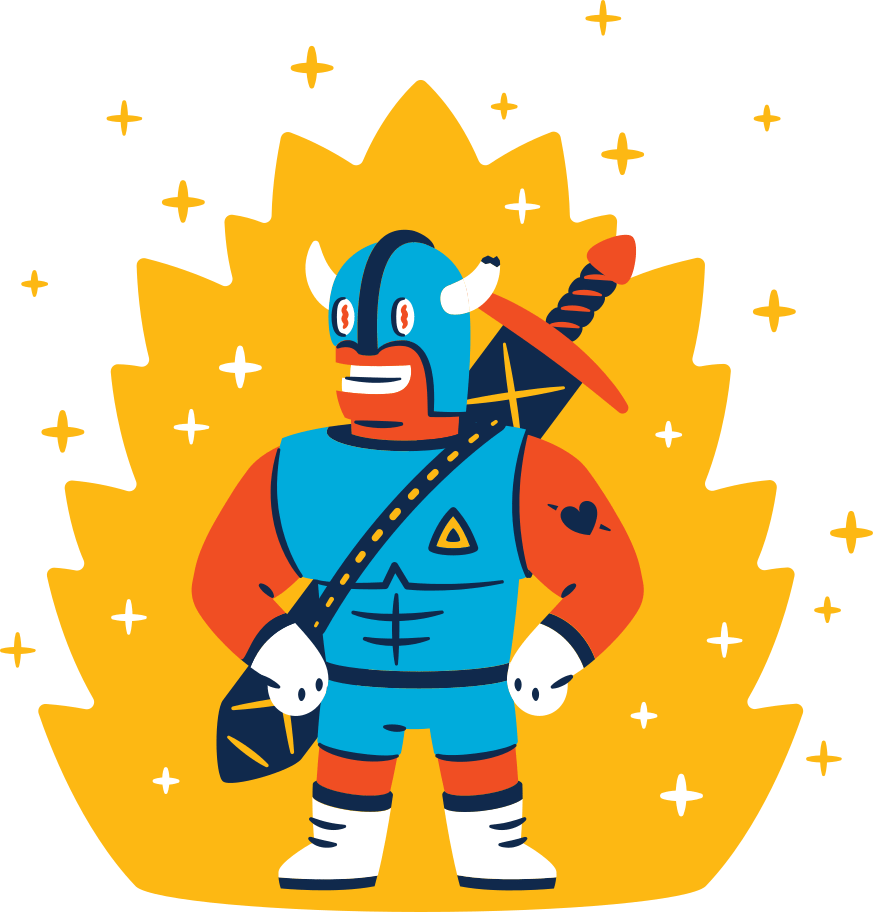An Honest Guide to Building a Powerful Developer Portfolio
How to effectively show off your skills

Yes, you should care about building your own dev portfolio — for many reasons. It’s true both for professionals and people trying to start their career.
Let’s analyze the returns on investment:
- Increased visibility and authority.
- A way to prove you know your craft.
- A background of work allowing you to get that first position in the industry.
- It can show your expertise on a subject.
- Increasing your personal brand.
- Stand out from a crowd of candidates in interviews.
The downside? It can take a while to build a decent portfolio. And most developers out there have no idea what to put inside it. Should you use that To-do list you made in React? The vanilla JavaScript weather app? What’s worth putting in it?
This guide aims to remove all the fuss around building your portfolio. Remember: The exact projects you decide to build doesn’t matter that much — as long as the choices behind them are correct.
Of course, quality is mandatory. You should care about writing the best code possible. But choosing the good reasons behind your portfolio will quickly help you find ideas and create an impressive one.

Choosing Projects
The number of projects that will compose your portfolio can vary. Do you have four to six medium-sized projects? That’s OK. Two very large ones? That’s still good. Realize that, however, the fewer you have, the more these projects will have to shine. You will have to go the extra mile to build something impressive.
I will later about how you can put your effort into a single project to really impress an interviewer.
Note how having a lot of quality projects can also put you one step ahead of other people. Why? Because you’ll have more flexibility. You’ll still choose the best five or six. But you’ll have a safety net if you want to give a different direction to your portfolio. Maybe you decide to show off your skills in React, Electron, or Vue. More projects mean more choice and flexibility.

What’s the Point of Your Work?
This is directly linked toabove. What’s the actual point behind your portfolio? Do you want to showcase your power in Angular? Demonstrate how good you can switch technologies? This varies from person to person. I’m more for a specialized developer. Pick three or four skills and do the best you can to build projects with them.
What Projects Can You Build for Your Portfolio?
This is the pain point of many resources I found online. A lot of them will give you tips and tricks on how to improve your portfolio website. But what should you build to make it stand out?
The answer is easier than you think. There are thousands of things you could build with your skills: weather apps, budget apps, clones. What I think will make your projects stand out is the meaning you give them. You should care about why you are building those projects — what you’re trying to demonstrate with them. These inner reasons will make your portfolio shine.
Here are the best ideas I’ve come up with, to give you some direction when deciding what to build.

1. Build Something for a Family Member or Friend
It’s easy to find someone who needs something. Maybe a family member has a shop or activity that needs a website. Or maybe they need an app to manage their bookings, clients, or staff. Do you love to meet up with old friends for parties at the weekend? Create an app to organize them. If you live with your flatmates, create an app to share house expenses.
Take your surroundings and building something out of them. It will show that you have an intuition for solutions. That’s incredibly valuable for anybody looking to hire. You see a problem, understand a platform for a solution, and build it!
2. Build Something for a Local Business
This may look similar to what was said above but the meaning behind this project is different. It allows you to demonstrate your ability to work in a more competitive environmen — where you’re actually seeking real clients and working with them to find a solution to their problems. This will show you can work in an unfamiliar environment to deliver projects. It also demonstrates some soft skills, like proposing a product to business.
My suggestion is to use networking to find businesses that need help. You may know somebody who knows somebody else in need of a website. Maybe your local ice cream shop needs a new platform for getting clients. Use your imagination and summon up a lot of courage for this.
3. Build Something Tailored to Your Needs
I needed a way to quickly take notes I write during the day, assign them to a category, and order them in a calendar. I couldn’t find any apps like this in the online store. Why not build one myself and put it in my portfolio? How cool is that? You write solutions for you, with your skills, and then publish them to a broader audience of people who might have similar needs.
4. Building a Clone
Re-building a website can take a lot of skill and time. Maybe you can take something easy and refactor it to improve it. If you want to shoot to the moon and clone a very big website like Airbnb or Instagram, maybe take a smaller part of it. Make it better and show the process behind your decisions. You have to have a sense of what’s good and what’s not in the industry to stand out.
Personal example
Some companies that I interviewed for asked me to find fault in their websites/platforms. Showing off critical my eye took me far.
Tip: Only do this if you are asked by the company to do so, proactively pointing out flaws could come across as arrogant or belittling which is definitely not the first impression you want to make.
A little trick
I find this trick of huge value but nobody seems to talk about it. If possible, during the wide period of time of interviews for a company, why not clone or build a smaller, improved version, of the product the interviewing company is making? If you don’t have a portfolio this can take you a mile ahead of other candidates. You understood the project, created a clone or smaller version, and actually proposed it to the original creators.
It’s quite like if you were making pizza and wanted to work for the local pizzeria. Why instead of telling them your skills you don’t let them taste your version of their most famous dish?
5. Use Courses Projects to Your Advantage
Perhaps you have joined a Bootcamp or an online coding course. Most of these resources will guide you through building projects while learning. Why not use those projects as a platform for portfolio material? Improve, expand, and publish them. Show how much you like to take the extra mile and get something done right.
6. Get Some Positive Freelancing Experience
If you can survive through freelancing and write some websites, that would be amazing. Ensure you put extra effort into this, so you can ask your clients to give you a positive review for your portfolio.

What Next?
Got some cool projects under your belt? That’s great. Now the best thing possible would be to have a cool yourdomain.com website where you can show them. You can really find cheap ways to do that on platforms like:
- SiteGround (my choice).
- GoDaddy.
- HostGator.
Plans are really cheap, especially for new clients. The investment is fully worth it for the great support and tech specs you will receive. I highly recommend investing, as a slow, ugly portfolio can make more harm than good.
The formula for a Good Portfolio Website
You don’t want to go for the complex route here. Don’t distract people from the great work you have done. I believe a simple website with three pages is enough:
Borrelli, P. (2020, June 10). An Honest Guide to Build a Decent and Powerful Developer Portfolio. Retrieved November 16, 2020, from https://medium.com/better-programming/an-honest-guide-to-build-a-decent-and-powerful-developer-portfolio-2319f2cc2c19